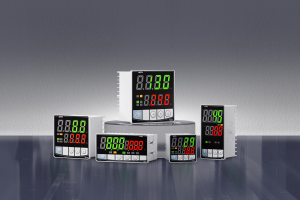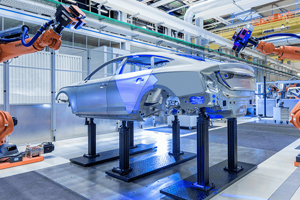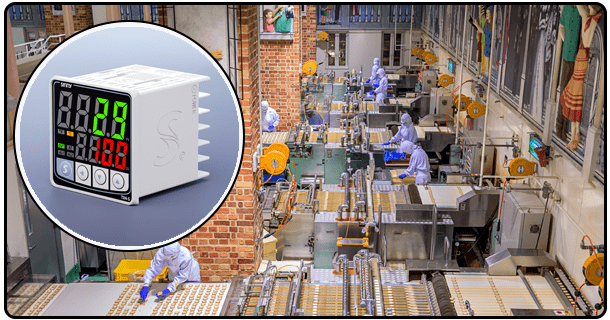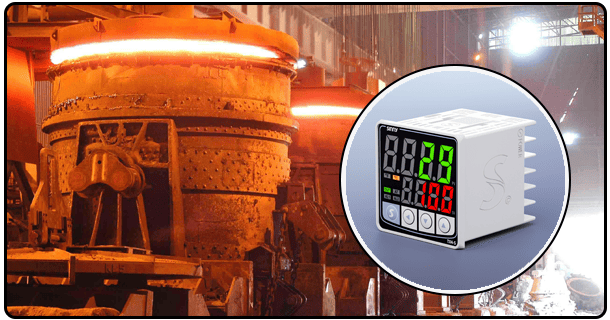What does PID stand for on a temperature controller? Explained in a clear way!
Learn what PID is and how it works. Discover the difference between proportional, integral and derivative components. Also, learn about real-world application.
1. Introduction
The PID controller is a key component in industrial automation. It ensures precise temperature control across many industries. These controllers are used in everything from medical equipment to chemical processing. What does PID mean and why is this so important? This article explores the science of PID and examines its applications in modern technology.
2. What is PID ?
PID stands for Proportional-Integral-Derivative, which refers to the three distinct control actions that define the operation of a PID temperature controller. The terms play a crucial role in maintaining the stability of temperature:
Proportional (P), This component reacts instantly to any error. The difference between the setpoint temperature and the actual temperature is what this component measures. It ensures quick initial corrections by adjusting output in proportion to the magnitude error.
Integral: This element addresses any past errors which may have accrued over time. This element helps eliminate residual deviations through the integration of errors over time.
Derived (D): This derivative term is used to predict future errors through the analysis of error rate. The system is stabilized and oscillations are prevented by this predictive adjustment.
These three components work together to produce a system of temperature control that is balanced and effective.
3. What is a PID temperature controller?
A PID controller operates on the basis of closed loop feedback. This is a simplified version:
Measurement of input: By using sensors, the controller measures continuously and in real-time the current temperature.
Calculation of Error: This calculates error by comparing a process variable with the target temperature (setpoint).
Control actions: To minimize error, the controller uses proportional, integral and derivative adjustments.
Adjustment of Output: This adjustment controls the actuator (e.g. a cooling valve or heating element) in order to bring the variable process closer to the presetpoint.
The PID controller is indispensable for applications that require consistent temperatures due to the real-time feedback loop.
4. PID controllers: Advantages
Adopting PID temperature controls has many advantages.
Precision High: The PID controller excels at maintaining precise temperature levels even when complex systems are involved.
Stability They ensure stability by reducing oscillations and deviations.
Versatility These controls can be used with a variety of systems including HVAC, laboratory, and manufacturing equipment.
Less Human Interaction: PID Systems automate the process of manual adjustment, saving you time and decreasing errors.
PID controllers are a key component of industrial and scientific processes today because they offer these benefits.
5. Application of PID Temperature Controls
Many industries use PID controls. These are some notable examples:
HVAC Systems Ensure optimal indoor temperature in residential, industrial, and commercial settings
Chemical processing: Maintaining exact conditions for chemical reactions in order to maintain safety and quality.
Food processing: Regulation of temperatures during cooking, cooling and storage in order to comply with hygiene standards.
Medical equipment: Enabling precise thermal control in devices like incubators and sterilizers.
PIDs are a versatile and effective system that can be used in virtually all situations where it is important to regulate temperature.
The History of PID Controls
PID Control has its roots in the early twentieth century. Nicolas Minorsky, a Russian-American engineer, developed the mathematical foundation for proportional-integral-derivative control while studying ship steering systems in 1922. PID controllers have evolved over the years to be a major component in automation technology, revolutionizing many industries around the world.
6. How to choose the right PID controller
Consider the following when selecting a temperature PID controller:
Requirements for Application: Determine the needs specific to your system such as range of temperatures and response times.
Environment Conditions: Make sure the controller is able to withstand any operating conditions, such as humidity or vibration.
Budget : Compare features with cost and find the controller which offers you best value.
Reputation Choose brands that have a proven track record for quality and support.
You can choose a PID that is perfect for your requirements by evaluating these criteria.
PID controllers, which are driven by actions such as proportional, integral and derivative, are essential to precise and stable temperature control. They are used in a wide range of industries from medical to chemical. PID temperature controls remain on the cutting edge of technology as automation evolves.
- What is a PID temperature controller? Features, advantages, and applications explained
- PID Controlador de Temperatura: Una Guia Detallada























